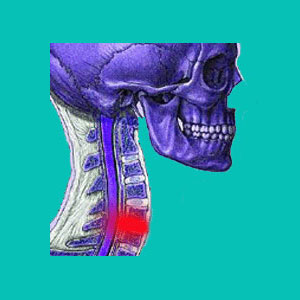
Bulging disc treatments offer the potential for finding relief from pain that is generated by intact and contained herniated discs. The term bulging disc is almost always used to describe an intervertebral protrusion wherein the disc maintains structural integrity and has not ruptured, extruded or become sequestered.
Since bulging discs can only create pain through neurological compression, the therapies targeting them must act on the focally prolapsed mass of the disc in order to be effective. This eliminates any treatment that would target chemical radiculitis conditions or discs that have already ruptured.
This patient guide provides expert coverage of the very best bulging disc care practices. We examine both surgical and nonsurgical bulging disc treatments and detail the positive and negative attributes of each therapy option.
Noninvasive Bulging Disc Treatments
Nonsurgical care methods are typically exhausted before invasive techniques are even seriously considered. The exceptions to this rule are disc prolapse events involving significant trauma and immediate dire neurological consequences, such as cauda equina syndrome.
Nonsurgical care approaches almost always qualify as symptomatic care, since they do nothing to address the underlying structural issues created by the herniation. Instead, these treatments generally seek to make the patient more comfortable while the body attempts to heal itself. However, there is one singular exception to this symptomatic treatment rule that actually has the ability to resolve the problematic abnormal structure of a bulging disc.
The most popular nonsurgical therapies for contained herniated discs include chiropractic, massage, pharmacological treatment, physical therapy, TENS and spinal decompression. All of these choices are profiled in detail on their respective pages and in our report covering the full range of nonsurgical herniated disc treatments.
Of all of these modalities, only spinal decompression provides hope for enacting a real cure for a bulging disc. This is because decompression alters the spinal anatomy, reducing the size of the bulge and resolving pressure exerted against nerve tissues. Decompression therapy is expensive, but is actually a good value, since it allows a patient to enjoy a true cure, while still avoiding the many substantial risks of surgical treatment.
Invasive Bulging Disc Treatments
Invasive care practices for bulging discs come in two forms. Injection-based procedures are used as minimally invasive symptomatic treatments in virtually all cases, since for intervertebral bulging, unlike instances of chemical radiculitis, injections stand virtually no chance of providing a cure. Typically, injection therapies are used after more conservative options have failed and before full disc surgery is prescribed.
Herniated disc surgery comes in multiple levels of invasiveness and may seek to accomplish a variety of surgical objectives. There are procedures which avoid treating the bulging disc, but seek to deaden the nerve signal, such as the various forms of neurological ablation like radiofrequency lesioning. There are procedures that use the least invasive approaches to reduce the size of the bulging portion of the disc using diathermy to literally burn away some of the nucleus mass, such as IDET and nucleoplasty. Finally, there are more invasive procedures that seek to manually reduce the size of the bulging disc by cutting away tissue, such as in the case of discectomy.
The latter two categories of disc surgery seek to be curative in their treatment approach and therefore stand the chance of truly resolving a pathological bulging disc. Of course, surgeries of all types demonstrate many risks and these negative factors must be considered carefully by each patient in order to achieve the best postoperative results.
Treating Bulging Discs
Unfortunately, few treatments are deemed to be truly successful for most bulging discs. This fact is supported by decades of disappointing treatment which fails to bring about relief, facilitates greater and more symptomatic spinal degeneration or even makes the pain complaint worse as a direct result of treatment. None of these outcomes is desirable, but all are very commonly found in disc pain sufferers who are involved in active treatment.
One of the main impediments to successful treatment is the epidemic misdiagnosis of bulging discs as the real source of pain. Research science has conclusively proven that the overwhelming majority of bulging discs are not symptomatic or pathological in any way. Therefore, they do not require treatment. This is not to say that pain does not exist, since back and neck pain are extremely common expressions in modern society. What it does mean is that the disc is not likely to be the source and that the true causation has yet to be determined.
In cases of accurate diagnosis of a pathological bulging disc, symptomatic treatments might provide some relief or they might not. If moderately effective, treatment may allow the body to heal itself naturally and this is always a preferred path for financial and overall health reasons. If the condition does not resolve in the expected timeframe, then the patient is usually best off seeking curative care, rather than subjecting themselves to an extended battery of symptom-based methods that enslave the patient financially.
The nonsurgical curative treatment path is best represented using spinal decompression. The DRX9000, AccuSpina, Antalgic Trak and VAX-D systems are all excellent and can provide outstanding results for indicated conditions. As far as disc surgery, the least invasive forms of nucleus ablation work well for most contained herniated discs and certainly pose the least overall risk when compared to more open surgical endeavors, like discectomy. We prefer nucleoplasty slightly more than the common IDET technique. Discectomy in its many forms can also succeed, but exposes the patient to a significant risk of re-herniation postoperatively.
Remember that none of the above bulging disc treatments will likely provide positive lasting results for any disc condition that is mistakenly identified as the source of pain. This is sensible and explains why so many disc treatments and surgeries fail outright or eventually, being that they are not directed at the true causation of pain.





